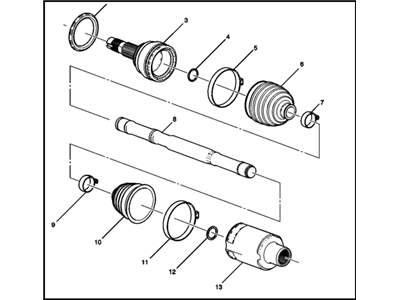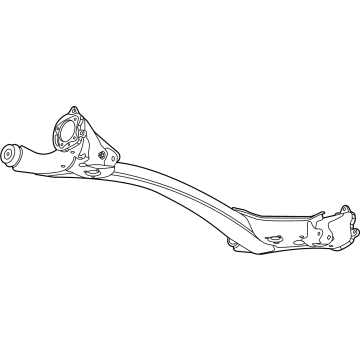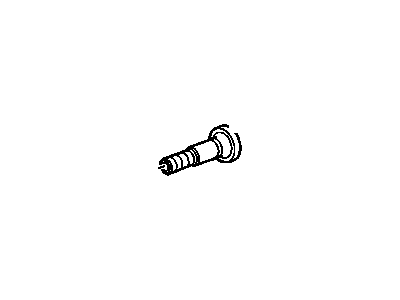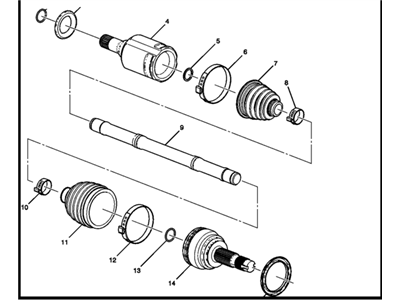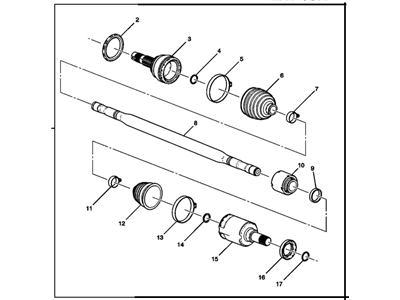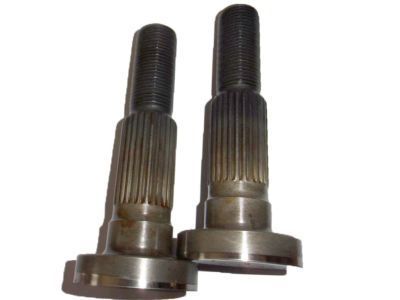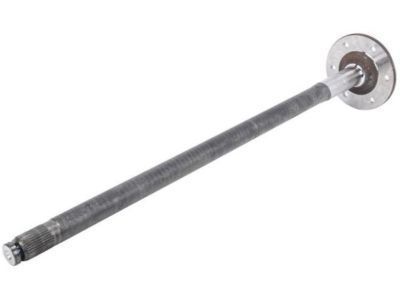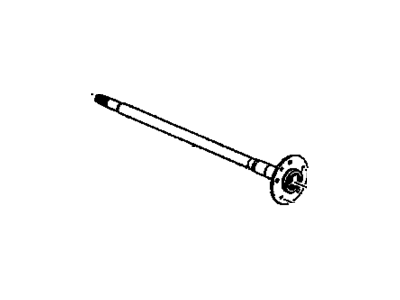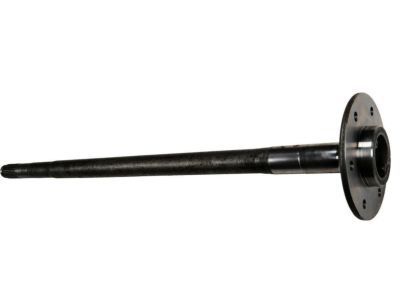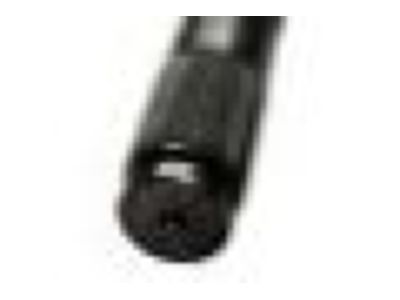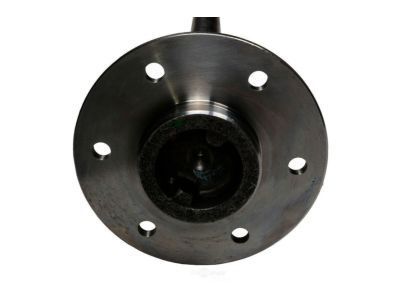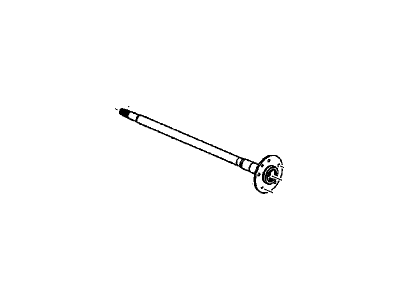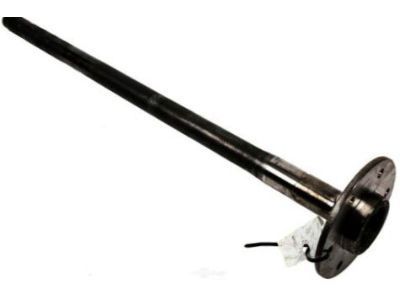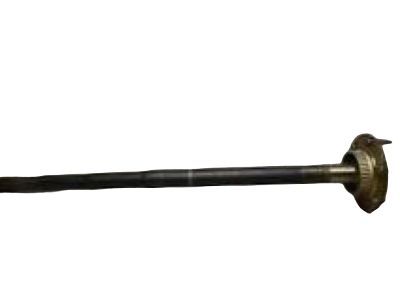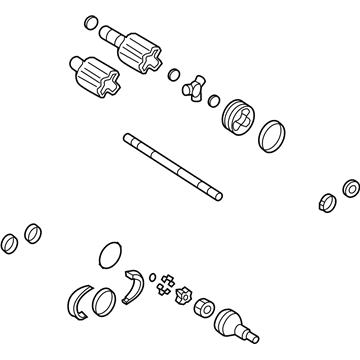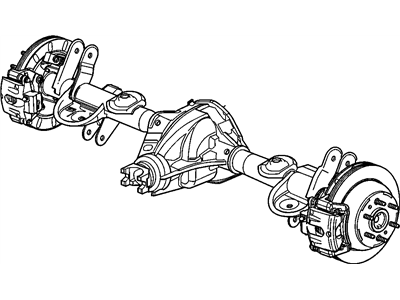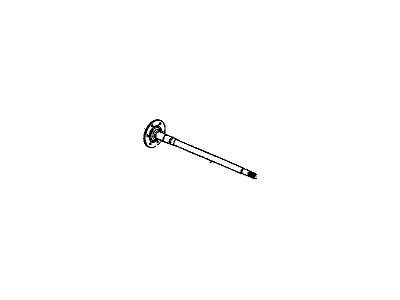
My Garage
My Account
Cart
Genuine Chevrolet Trailblazer Axle Shaft
Car Axle Shaft- Select Vehicle by Model
- Select Vehicle by VIN
Select Vehicle by Model
orMake
Model
Year
Select Vehicle by VIN
For the most accurate results, select vehicle by your VIN (Vehicle Identification Number).
34 Axle Shafts found
Chevrolet Trailblazer SHAFT ASM-FRT WHL DRV HALF
Part Number: 60007214$100.92 MSRP: $167.03You Save: $66.11 (40%)Ships in 1-3 Business DaysChevrolet Trailblazer AXLE ASM-RR CMPD CRK
Part Number: 42821860$842.68 MSRP: $1094.39You Save: $251.71 (23%)Ships in 1-3 Business DaysChevrolet Trailblazer Front Drive Axle Inner Shaft
Part Number: 12479125$358.33 MSRP: $593.06You Save: $234.73 (40%)Ships in 1-3 Business DaysChevrolet Trailblazer SHAFT ASM-FRT WHL DRV HALF
Part Number: 60007213$104.68 MSRP: $173.24You Save: $68.56 (40%)Ships in 1-3 Business DaysChevrolet Trailblazer Axle Assembly, Rear Cmpd Crk
Part Number: 42729884$842.68 MSRP: $1094.39You Save: $251.71 (23%)Ships in 1-3 Business DaysChevrolet Trailblazer SHAFT ASM-FRT WHL DRV HALF
Part Number: 60007211$92.50 MSRP: $153.09You Save: $60.59 (40%)Ships in 1-3 Business DaysChevrolet Trailblazer SHAFT ASM-RR WHL DRV
Part Number: 60006452$106.05 MSRP: $175.52You Save: $69.47 (40%)Ships in 1-3 Business DaysChevrolet Trailblazer Shaft Assembly, Rear Whl Drv
Part Number: 60005021$111.10 MSRP: $183.87You Save: $72.77 (40%)Ships in 1-3 Business DaysChevrolet Trailblazer SHAFT ASM-FRT WHL DRV HALF
Part Number: 60007212$133.99 MSRP: $221.77You Save: $87.78 (40%)Ships in 1-3 Business DaysChevrolet Trailblazer Front Wheel Drive Shaft Kit
Part Number: 26079789$389.21 MSRP: $615.16You Save: $225.95 (37%)
| Page 1 of 2 |Next >
1-20 of 34 Results
Chevrolet Trailblazer Axle Shaft
The Axle Shaft in Chevrolet Trailblazer cars is a very important part of a vehicle, transmits power from the differential to the driving wheels for independence in rotation. In this design, there is an improvement of the grip, most importantly around the turns. Manufacturers install Solid axles and half shafts in Chevrolet Trailblazer models depending with the suspension type. In very old generation vehicles, the system that connects the wheels at both ends is called the solid axle whereas in vehicles having independent suspension the system is known as the half shafts. The initial key difference in these axles types is making and their usage, solid axles contain the differential, and halfshafts link the transaxle to the wheels and may be exposed to wear at CV joints. In Gernal the Axle Shaft is very important for the performance and handling of the Chevrolet Trailblazer for power transmission and control of motions.
Each OEM Chevrolet Trailblazer Axle Shaft we offer is competitively priced and comes with the assurance of the manufacturer's warranty for the part. Furthermore, we guarantee the speedy delivery of your orders right to your doorstep. Our hassle-free return policy is also in place for your peace of mind.
Chevrolet Trailblazer Axle Shaft Parts Questions & Experts Answers
- Q: How is power transmitted from the front differential to the front wheels through axle shafts on Chevrolet Trailblazer?A:Power is transmitted from the front Differential/axle to the front wheels through a pair of driveaxles, with the inner end of the right driveaxle splined to an axleshaft connected to the right differential side gear, while the inner end of the left driveaxle has a short stub shaft splined to the left differential side gear. The outer end of each driveaxle features a stub shaft splined to the front hub and bearing assembly, secured with a large nut. The inner ends of the driveaxles are equipped with sliding constant velocity (CV) joints, allowing for both angular and axial motion, consisting of a tripot-type bearing and a housing that permits sliding as the driveaxle moves with the wheel. The outer ends are fitted with "ball-and-cage" type CV joints, which allow for angular movement but not axial, comprising six caged ball bearings between an inner race and the housing. Periodic inspection of the boots for damage and leaking lubricant is essential, as torn CV joint boots must be replaced immediately to prevent joint damage; if a boot is damaged, the driveaxle must be removed for replacement. In cases of boot damage, the CV joint can be disassembled and cleaned, but any damaged parts necessitate replacement of the entire driveaxle assembly. Common symptoms of worn or damaged CV joints include lubricant leaks, a clicking noise during turns, a clunk when accelerating after coasting, and vibration at highway speeds. To check for wear, grasp each axle individually and rotate it in both directions while holding the CV joint housings, feeling for play that indicates worn splines or sloppy CV joints, and inspect the driveaxle shafts for cracks, dents, and distortion.
